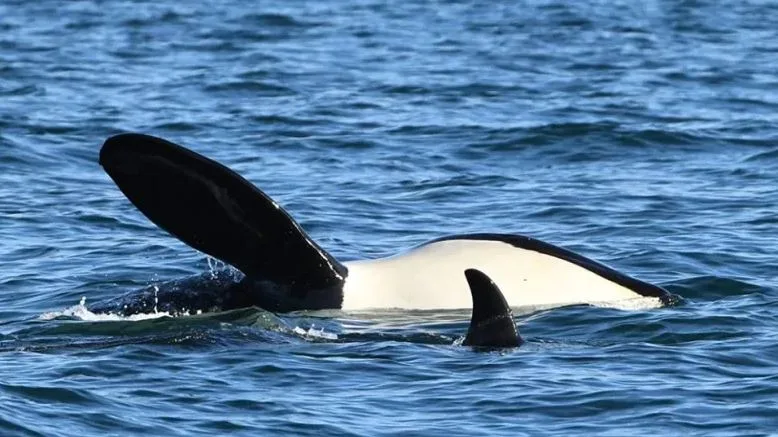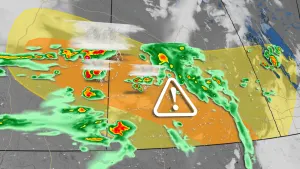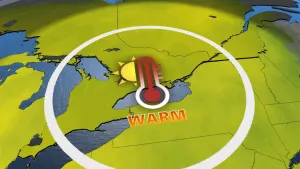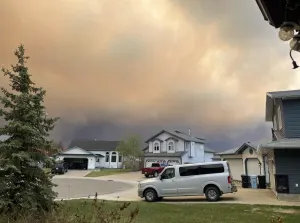
Killer whales last seen in poor health near B.C. now missing
Two southern resident killer whales last seen in deteriorating health are now missing from their family groups.
Researchers with the Centre for Whale Research spotted J pod and K pod in Haro Strait over the weekend, but two orcas, J17 and K25, weren't with their families.
The centre hasn't declared the whales dead, but biologist Michael Weiss said "it's not looking good."
"These were two whales we were already really worried about. They were looking pretty emaciated, so to have them be the two that we can't seem to find in these groups is pretty alarming," Weiss said Tuesday.

A photo taken of the southern resident killer whale known as J17 on New Year's Eve showed the 42-year-old female with so-called peanut head, a sign of starvation. J17 was not seen with the rest of her pod when researchers saw the family group on July 6, 2019. (Center for Whale Research)
The biologist said J17 hasn't been seen in weeks. The last photos of her show the 42-year-old female with peanut head — a misshapen head and neck caused by starvation.
K25 was emaciated when last seen in January. It's believed the 28-year-old male had been struggling to forage on its own after losing its mother, K13, in 2017.

K16 and K35, members of K pod, seen in Haro Strait on July 6, 2019. Their relative, K25, hasn't been seen since January and was not with the rest of the pod. (Center for Whale Research)
Weiss said it's common for male killer whales, which are extremely dependent on their mothers for food, to have trouble feeding in the first two to three years after the mother dies.
"There's a danger period," Weiss said.

Aerial images of J17, from September 2015 to May 2019. The latest images show she is emaciated and with signs of "peanut head" because of a drastic loss of fat. (Holly Fearnbach and John Durban/NOAA Fisheries )
Weiss said the pods have left the mainland area, but researchers will continue to look for the missing whales when the groups return.
A week before researchers realized two adult whales are missing, they celebrated spotting all three pods that make up the endangered southern resident killer whale population.

Aerial images of J17, from September 2015 to May 2019. The latest images show she is emaciated and with signs of "peanut head" because of a drastic loss of fat. (Holly Fearnbach and John Durban/NOAA Fisheries)
The Department of Fisheries and Oceans said in a tweet on Friday that they were happy to report researchers had encountered members of J, K and L pods off the west coast of Vancouver Island.
It said experts also saw a new calf swimming with its mother, J31.
The endangered whales had disappeared for much of June from their usual summer location off the southern end of Vancouver Island and around the U.S. San Juan Islands.
The residents are listed as a species at risk in Canada with just 75 left.
Original story published on CBC.ca, with files from the Canadian Press.









